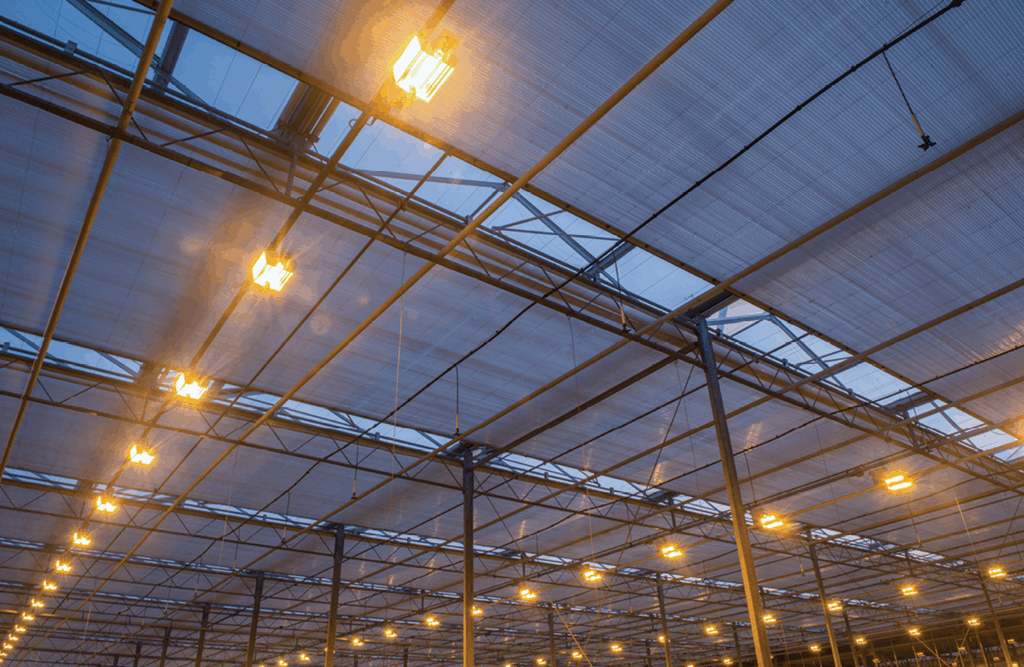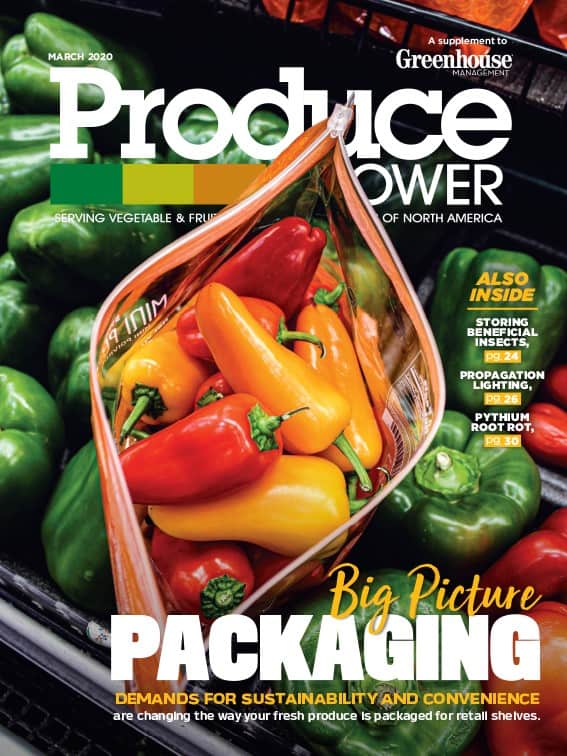

Since light is the driving source for photosynthesis and carbohydrate development in plants, it’s important for cuttings and seedlings to receive the appropriate amount. If not, low light intensities will result in delayed crop or little to no root development. On the contrary, too much light will result in excessive stress on cuttings, which will reduce root formation and cause leaves to bleach.
In 2019, two professors from the department of horticulture at Michigan State University — Professor and Extension Specialist Erik Runkle and Assistant Professor Roberto Lopez — collaborated with Greenhouse Lighting and Systems Engineering (GLASE) to discuss supplemental lighting management techniques.
According to both professors, it’s important to understand daily light integral (DLI), the cumulative number of micromoles per photons that are delivered to a specific area over a 24-hour period. This is important because DLI measures light levels, which in turn, helps growers achieve high-quality light that will produce high-quality crops.
According to Runkle, DLI varies in greenhouses due to factors that influence light intensity and duration. Some factors include time of year (the sun’s angle), location and cloud cover, day length (photoperiod), greenhouse glazing and curtains, structure and observations, hanging baskets and supplemental lighting (SL).
“There are many reasons or benefits to providing ample light to plants,” Runkle said. “Among them are plants under higher light typically have smaller and thicker leaves; there are more larger flowers when they do flower; they have greater branching and thicker stems; there’s a greater amount of root growth, which is especially important for plugs and cuttings; when we’re growing plants that have harvestable yield — maybe a lettuce or a tomato — that typically increases with light. And when we’re talking about ornamental plants, we are interested in time to flower and we find — and others have reported — that plants flower quicker under a high DLI.”
Lighting applications
There are three main horticulture lighting applications. The first type is called photoperiod lighting, where low-intensity lighting is delivered at night and helps regulate plants that are sensitive to photoperiod. The second lighting application is supplemental lighting, which is much higher and is applied to increase photosynthesis and plant growth. The third is sole-source or indoor lighting, which only comes from electronic fixtures.
SL during liner production
Since climates differ, Lopez said growers in northern latitudes will have a lower DLI than growers in southern latitudes. During young plant propagation, he said that outdoor DLI levels in the north can range from 5 to 20 moles per day, but, in a greenhouse structure, can drop to 50% or less of that range due to structure, glazing, shading and obstructions.
But being aware of DLI is key, and according to Lopez, most growers are unaware of that.
“If you’re a propagator of young plants, you want to minimize that production time, whether you’re rooting cuttings or producing plugs,” he said. “Obviously, you want to reduce your energy cost and produce the highest quality of plug or liner. However, we have these sorts of environment [up north] that can be challenging. Oftentimes when we would talk to growers, their main concern was maintaining that temperature. We would often ask what the DLI is during propagation, and most had no idea or weren’t tracking it.”
SL recommendations for cuttings
Providing 50 to 70 micromoles of photosynthetically active radiation by high-pressure sodium lamps (HPS) or LEDs is recommended during cutting propagation, which is divided into four stages.
Stages 1 to 2: Stick to callus formation
For stage one, “you want to try to target a DLI of anywhere from 4 to 7 moles during this time period,” Lopez said. “Also, it’s very important to note that you want to provide indirect or diffused lights. This is primarily from the sun by utilizing shade curtains or white watts to maintain a photosynthetic photon flux density (PPFD) of anywhere between 120 to 200 micromoles.”

Stage 3: Root development
Stage three calls for increased light intensity. If growers are providing 70 to 120 micromoles of light with a target of anywhere from 8 to 12 moles per day, once those roots have initiated, Lopez advised to increase PPFD to between 200 and 400 micromoles.
Stage 4: Toning
In this stage, growers are preparing to tone liners for shipping or transplanting. Using 70 to 120 micromoles of supplemental lighting and maintaining a DLI greater than 12 moles of light is recommended.
“In some parts of the country, it’s going to be very difficult to maintain 12 moles of light because even with supplemental lighting, you may only be able to achieve 10,” Lopez said. "But as we tell most growers, the higher that DLI, the higher quality of crop you’re going to be able to produce and the faster you’ll be able to get that crop out of the greenhouse.”
At this point, growers can increase light intensity anywhere from 500 to 800 micromoles.
SL during plug production
To achieve a DLI of 8 to 12 moles, previous MSU research recommends providing 70 to 90 micromoles of supplemental lighting during stages three and four.
“We find that when you provide supplemental lighting for plugs, you’re going to reduce the production time of those plugs, you’re going to see an increase in stem diameter — which is going to produce a studier plug — and more branching,” Lopez said. “Oftentimes when these young plants are grown under high-pressure sodium lamps, because of the additional heat, you’re going to see that these young plants can also flower earlier upon transplant.”
HPS or LEDs?
“It’s very situational,” Runkle said, and is contingent upon available electricity, cost to purchase and install, cost of electricity, hours of operation, lamp efficacy, fixture longevity and maintenance, light spectrum, uniformity and intensity. It is also noted that plants under HPS are typically 2 to 3° F warmer than under LEDs. Runkle said the first step to pinpointing which lighting to use is working with a lighting company to obtain customized lighting maps and quotes.


Explore the March 2020 Issue
Check out more from this issue and find your next story to read.
Latest from Produce Grower
- Chilli thrips (Scirtothrips dorsalis)
- GS1 US Celebrates 50-Year Barcode 'Scanniversary' and Heralds Next-Generation Barcode to Support Modern Commerce
- University of Florida offers Greenhouse Training Online program on irrigation water
- Flower trends in full bloom
- Nominate an outstanding leader
- New Florida Extension Agent Will Teach Stakeholders About Food Safety
- Paint it black
- Regular checkups





